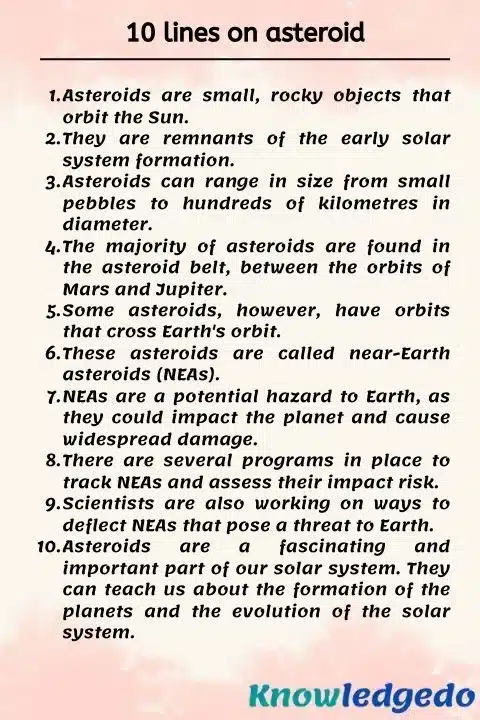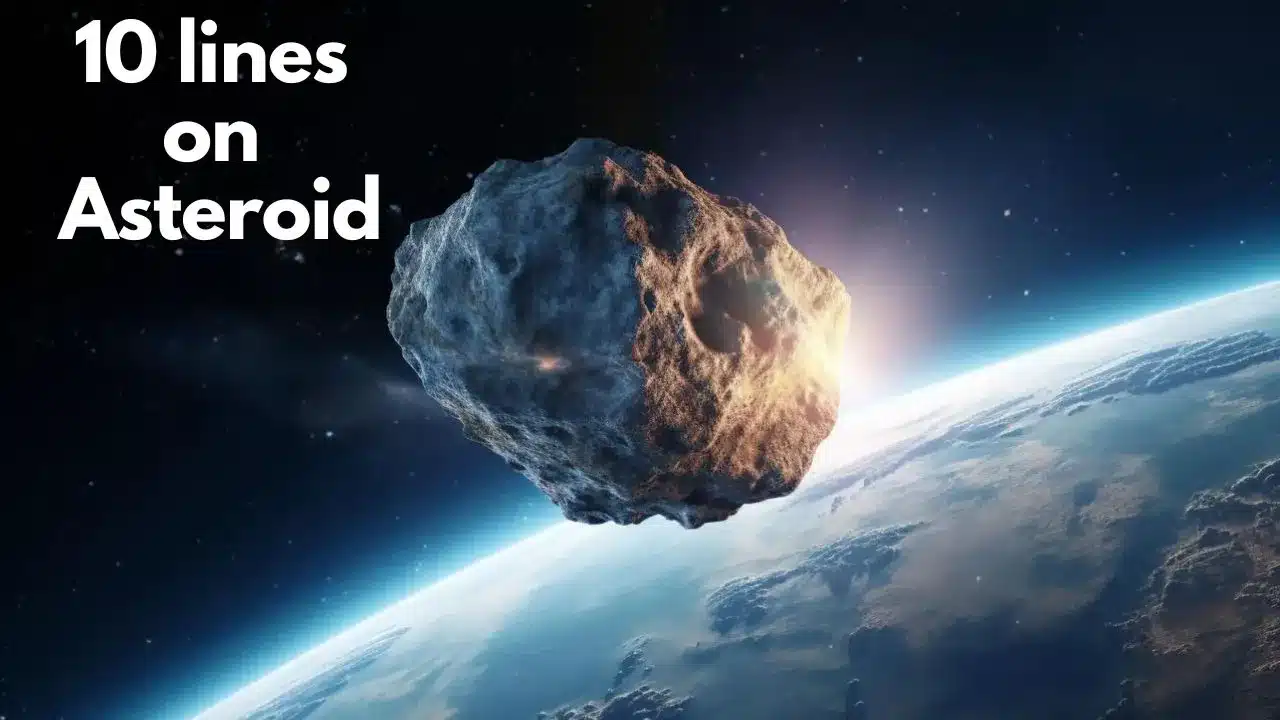Today, we are sharing 10 lines on asteroid in English. This article can help students who are looking for information about 10 lines on asteroids. These lines are straightforward and easy to remember. The level of difficulty is moderate, making it accessible for any student to write on this topic.
This article is generally useful for class 1,class 2,class 3,class 4,class 5,class 6,class 7,class 8,class 9,class 10,class 11,class 12
10 lines on Asteroid
1) Asteroids are small, rocky objects that orbit the Sun.
2) They are remnants of the early solar system formation.
3) Asteroids can range in size from small pebbles to hundreds of kilometres in diameter.
4) The majority of asteroids are found in the asteroid belt, between the orbits of Mars and Jupiter.
5) Some asteroids, however, have orbits that cross Earth’s orbit.
6) These asteroids are called near-Earth asteroids (NEAs).
7) NEAs are a potential hazard to Earth, as they could impact the planet and cause widespread damage.
8) There are several programs in place to track NEAs and assess their impact risk.
9) Scientists are also working on ways to deflect NEAs that pose a threat to Earth.
10) Asteroids are a fascinating and important part of our solar system. They can teach us about the formation of the planets and the evolution of the solar system.

5 lines on Asteroid
1) Asteroids are small, rocky objects that orbit the sun.
2) They are leftovers from the formation of our solar system.
3) Most asteroids are found in the asteroid belt between Mars and Jupiter.
4) Some asteroids have orbits that cross Earth’s orbit.
5) These asteroids are called near-Earth asteroids (NEAs).
FAQ
Answer: Asteroids are small, rocky objects that orbit the sun. They are leftovers from the formation of our solar system. Most asteroids are found in the asteroid belt between Mars and Jupiter.
Answer: Near-Earth asteroids (NEAs) are asteroids that have orbits that cross Earth’s orbit. There are millions of NEAs, but only a small number of them pose a significant threat to Earth.
Answer: NEAs are tracked by a variety of telescopes and radar facilities around the world. These telescopes and radars can measure the NEA’s orbit and its size.
Answer: There are a number of ways to protect Earth from NEAs. One way is to deflect the asteroid’s orbit so that it misses Earth. Another way is to destroy the asteroid before it hits Earth.
